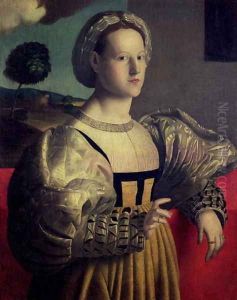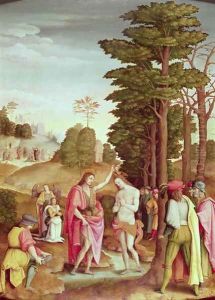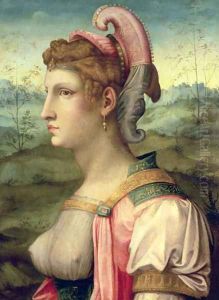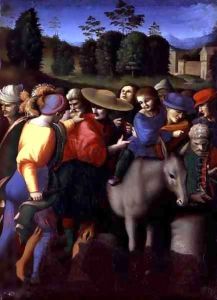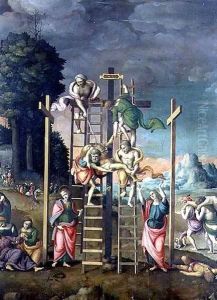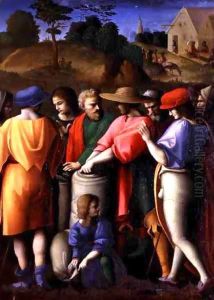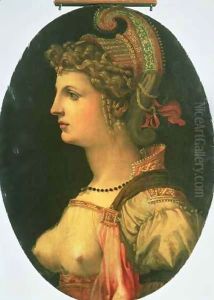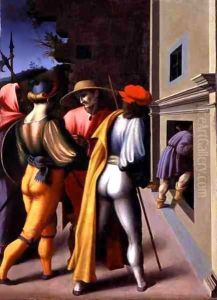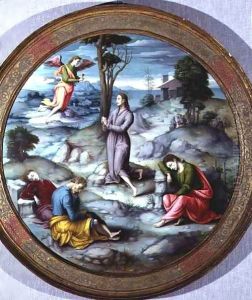Francesco Ubertini Verdi Bachiacca Paintings
Francesco Ubertini, better known as Bachiacca, was an Italian painter of the Renaissance period, born in 1494 in Florence, Italy. Bachiacca was a contemporary of the more famous artists of the time, such as Michelangelo and Raphael, but he developed a distinctive style that set him apart from his peers. Early in his career, he was influenced by the works of Perugino and the early Renaissance masters, which is evident in his meticulous attention to detail and the serene composition of his figures.
Bachiacca's work is characterized by its elaborate decoration and the use of intricate details, which he incorporated into both his religious and secular subjects. He was particularly skilled in depicting detailed nature scenes, animals, and botanical elements, which he often included in his compositions. This attention to detail extended to his portraits and religious scenes, where he combined a keen observation of nature with a profound sense of spirituality.
Throughout his career, Bachiacca was employed by the Medici family, one of the most powerful and influential families in Florence. He worked on various projects for them, including tapestry designs, which showcased his versatility and skill in different mediums. These commissions not only secured his reputation in Florence but also contributed to the spread of his work across Italy.
Despite his success, Bachiacca's work was somewhat overshadowed by the towering figures of the High Renaissance, and he did not achieve the same level of fame as some of his contemporaries. However, his contributions to Renaissance art, especially in the realm of detailed decorative elements and tapestry design, have been increasingly recognized and appreciated in recent years.
Bachiacca died in 1557, leaving behind a legacy that, while not as widely known as that of some of his contemporaries, is celebrated for its unique contribution to the art of the Renaissance. His works are preserved in several major museums around the world, where they continue to be studied and admired for their beauty and intricate detailing.

